selective digging Learn more about selective digging
-
Scientific selection and digging skills of bamboo shoots

Bamboo shoots have been regarded as treasures of dishes in China since ancient times. Bamboo shoots are a traditional Chinese delicacy with a crispy taste and a long history of eating and cultivation. In the Book of songs, there are poems such as adding beans, bamboo shoots, fish fish, its sounds, bamboo shoots and cattails, indicating that people eat bamboo.
2020-11-08 Bamboo shoots science selective digging skills bamboo shoots in China since ancient times -
Seed selection and seed retention techniques of Lotus Root

Seed selection and seed retention techniques of Lotus Root
2019-02-23 -
The latest course of technical methods for seed selection and retention of lotus root

Lotus root is a vegetable crop of Nymphaeaceae, which is loved by many people in our country. Lotus root is rich in nutrients, which can not only be fried, but also eaten raw. And the non-staple food and all kinds of snacks processed by lotus root are very popular. Now lotus
2020-11-10 Latest lotus root seed selection seed retention techniques methods tutorials -
Selection and cultivation of bonsai of Acer truncatum
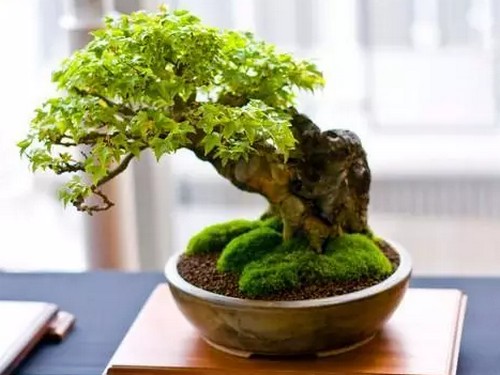
When I used to cultivate maple material, I usually kept it in the field for 5 years. There will be no pruning of the roots for 5 years. However, I found that five years later, the root grew thick and long, it was difficult to dig out of the ground, and the root disk was not ideal. Now I dig up and trim the roots every year.
2019-06-02 -
Planting techniques of Zanthoxylum bungeanum in three seasons

The main results are as follows: 1. Zanthoxylum bungeanum bungeanum is selected as the shrub, with a height of 2m, a diameter of 2.5m, a vertical depth of more than 4m and a horizontal distribution of more than 8m. It has strong adaptability and can be planted in barren hills, barren slopes, terraced ridges, front and back houses where the temperature is lower than-20 ℃ in winter. Generally in the middle and lower part of the slope, semi-sunny slope, gentle beam, terrace edge, terrace edge, the ridge of the field edge, sufficient light, good drainage, deep soil layer, and the production of pepper bright color, rich flavor, high quality.
2019-01-16 -
The method of excavating bonsai piles in the field
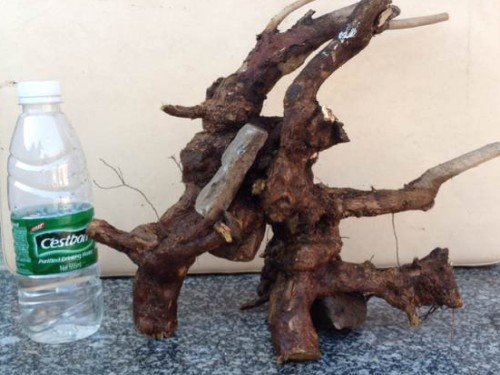
The older the bonsai is, the higher the value is. Although wild pile excavation can not be used as the main material source of mass production because of its rare materials, it can be used as an auxiliary means to make characteristic bonsai. It is characterized by rapid shaping and easy to reflect the quaint charm of bonsai, but destroys wild plant resources. therefore
2019-06-02 -
High-yielding techniques of creeping cultivation of Pueraria lobata, a variety used for medicine and food

High-yielding techniques of creeping cultivation of Pueraria lobata, a variety used for medicine and food
2018-06-29 -
How to plant eucalyptus trees

The first step in growing eucalyptus is to choose a suitable plot, whether in the mountains or plains. After selecting a good plot, it is necessary to prepare the land, dig holes, apply basic fertilizer, and then choose the right time to plant. Can be planted in spring, the selected eucalyptus seedlings will be deeply planted and compacted. Planting successfully
2020-11-09 How to plant eucalyptus first choose appropriate -
Cultivation and Management of Robinia pseudoacacia

First, the method of propagation is easy to reproduce, burying roots, cutting, grafting, or digging roots to propagate. The main and lateral roots of 1-year-old and 2-year-old Sophora japonica were selected for root-burying propagation, and the suitable diameter was 0.3-1.5 cm. 1012kg per mu of roots are needed, and 300kg / kg of roots can be cut 400 segments. Two methods of transplanting seedlings in greenhouse and burying roots in field can be selected. The indoor seedling was raised in different areas and the seedling raising time was different, so it was transplanted into the field in the middle of May. Burying roots in the field will be carried out when the lowest outdoor temperature is more than 10 ℃.
2019-01-16 -
The method of transplanting pine trees how to water pine trees after transplanting

As we all know, if pine trees are transplanted, it is not easy to survive, and there are too many factors involved. Some people say that if a pine tree is not to be transplanted, it should be moved with soil; others say that it is not possible to transplant a variety of pine trees. The editor checked a lot of information and asked some questions.
2020-11-08 Pine transplanting no dead method after how watering -
Mulberry planting technology

Mulberry planting technology
2018-07-02 -
Processing of apricot jam

The technological process is as follows: raw material selection, → raw material cleaning, → cutting, core digging, finishing → softening, beating, → heating and concentration, → canning, sealed → sterilization, cooling → inspection, → labeling → finished products. . Operation points: ① raw material selection: choose fresh apricot without disease and insect pests, mildew-free rot and deterioration, 89 mature fresh apricot. ② cleaning, cutting in half, core digging, trimming: peeling can be done by alkali and peeling. The fruit is soaked in 10%-15% sodium hydroxide solution and boiled for 5 minutes for 10 minutes. Rinse with plenty of water immediately after peeling.
2019-01-15 -
Selection of earthworm culture sites and 12 culture methods
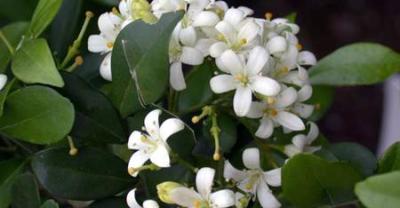
Outdoor breeding site selection: first, site requirements 1, back to the sun, ventilation, good drainage, in order to adapt to earthworms like dark, daytime and night habits. 2. The venue.
2019-02-23 -
Pear in syrup

Production method 1. Fruit selection: do not choose raw or overripe fruits, pears are ripe until yellow and slippery, and pears that are prone to discoloration such as rotten, mulberry, iron head, diseases and insect pests and apples are selected. The core temperature is above 5 ℃. two。 Pick the handle and peel it: first pick the pear handle and peel it mechanically. 3. Cut the seed nest in half and dig the seed nest in half longitudinally, dig out the seed nest and pedicle tendons, cut and trim into a complete 1 stick and 2 pieces. In the process of treatment, the fruit pieces must be immersed in 1: 2% salt water to protect the color, and the process should be shortened as much as possible.
2019-01-16 -
To master these points, a bonsai with Chinese wolfberry bones must be outstanding.

Material is the key to making a good medlar bonsai, how to obtain the medlar plant. There are many ways to obtain this, such as sowing, cutting, digging and so on. In general, most people still like to dig the old pile, the natural growth of the old pile wild.
2018-05-16 -
Methods and matters needing attention of picking piles in bonsai field
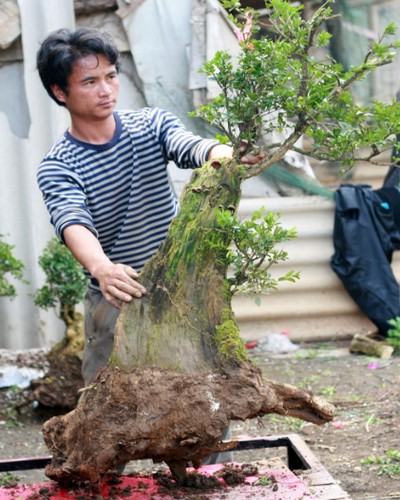
The classification of tree stump bonsai should include wild stumps and seedlings. The former is the bonsai made by mining wild piles, which is mainly characterized by old and simple, while the latter refers to the bonsai produced by artificial cultivation, which is mainly characterized by rigorous layout, and the two can not be confused. To dig tree stumps in the field, first make preparations before digging.
2019-06-02 -
Transplanting technique of Sabina vulgaris bonsai
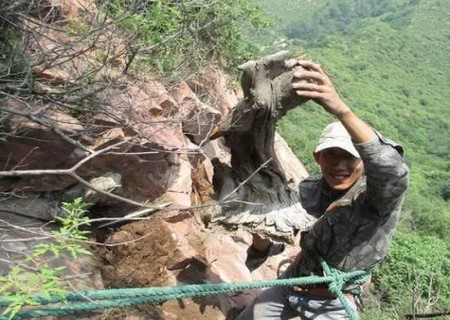
Many people not only like the juniper bracelet, but also want to get a bonsai. Sabina vulgaris is a prehistoric plant, originated more than 300 million years ago, is a Cretaceous relict plant in the dinosaur era, is called the rarest and oldest gymnosperms in the world, and is the only living plant fossil that is extremely rare in the world.
2019-06-03 -
Planting technique of Aconitum multiflorum

Aconitum multiflorum is a kind of plant whose root tuber can be used as medicine and can be used to treat rheumatic diseases. Today we will have a brief understanding of the planting techniques of Xiacao Wu. Planting techniques of Aconitum multiflorum L. soil preparation and soil preparation are selected as root crops, with deep soil layer, loose and fertile soil and water.
2020-11-09 Caowu planting technology is a kind of plant its root tuber -
How to plant licorice

Licorice, alias sweet grass root, sweet licorice, sweet root, powder grass and so on. It is a perennial herb of the genus Glycyrrhiza Leguminosae, which is used in medicine with roots and rhizomes. It has the functions of clearing heat and detoxification, moistening lung passive phlegm, tonifying spleen and qi, relieving cough and resolving phlegm, high and various drugs. For detoxification of sore, cough and sore, weakness of spleen and stomach, deficiency of qi and lack of blood, cold, stomachache, limb pain, jaundice, periodontal disease and so on. 1. Cultivation techniques (1) Sandy soil or sandy land with deep soil layer should be selected for land selection and land preparation. The tuyere should be avoided when selecting the site. After selecting the site, dig deep into the soil 40
2019-01-16 -
High yield cultivation techniques of Phyllostachys pubescens shoot

Bamboo shoot is a new type of health food. Cellulose, the most abundant in bamboo shoots, plays an important role in modern nutrition and health care. Often eat foods rich in fiber, which can prevent and cure hyperlipidemia, hypertension, coronary heart disease, obesity, diabetes, bowel cancer and hemorrhoids
2020-11-08 Bamboo shoots bamboo shoots high yield cultivation techniques hair
